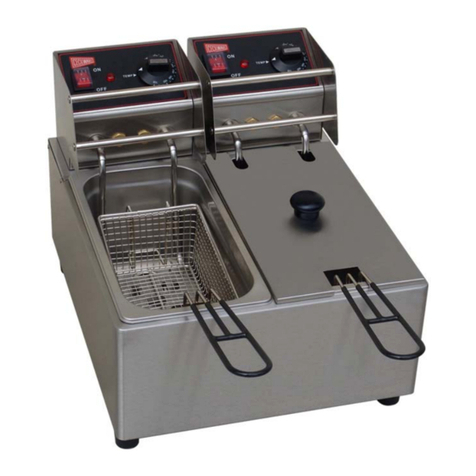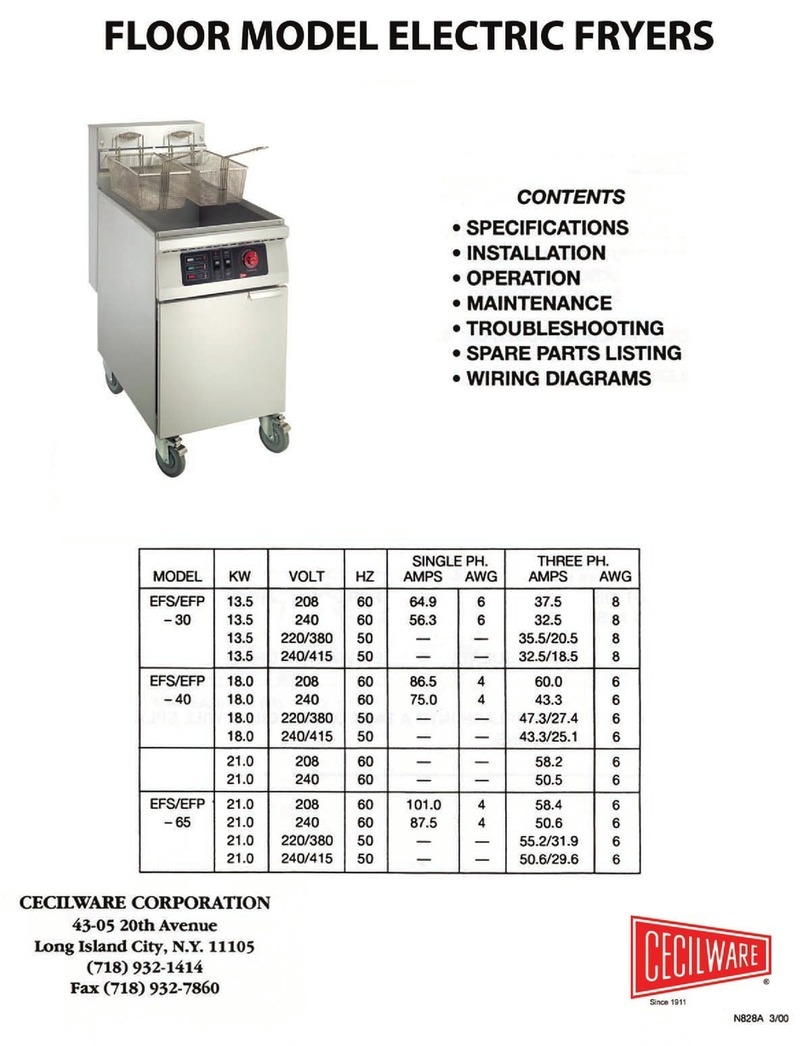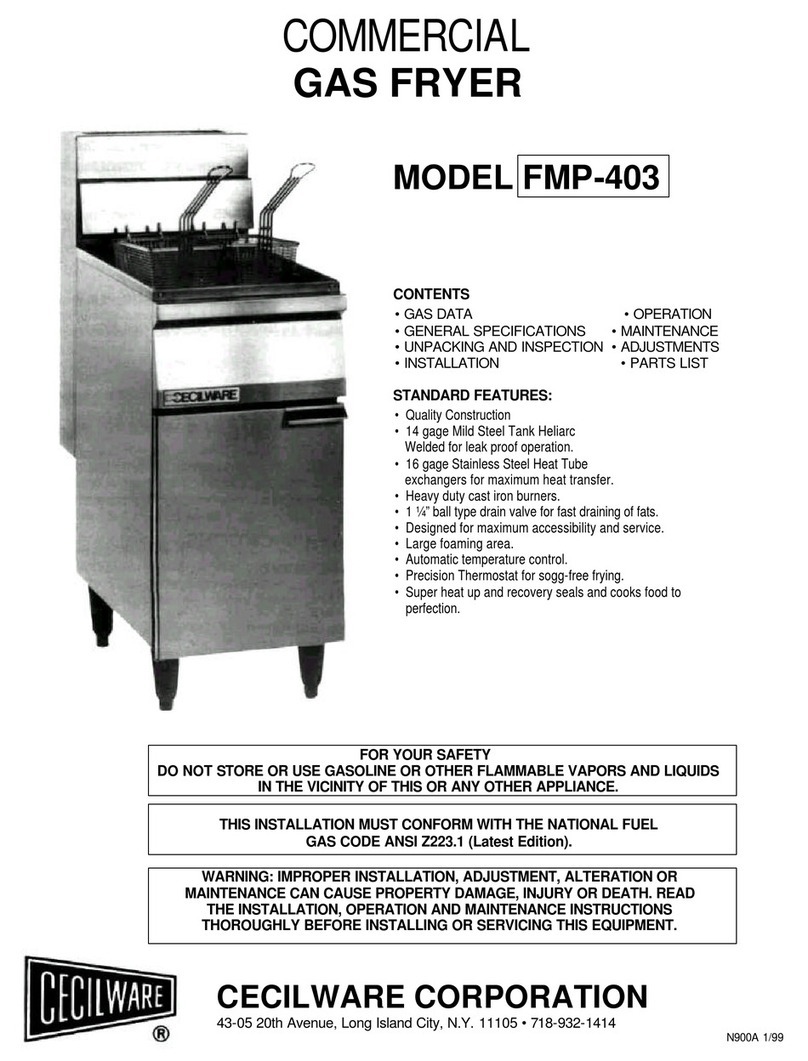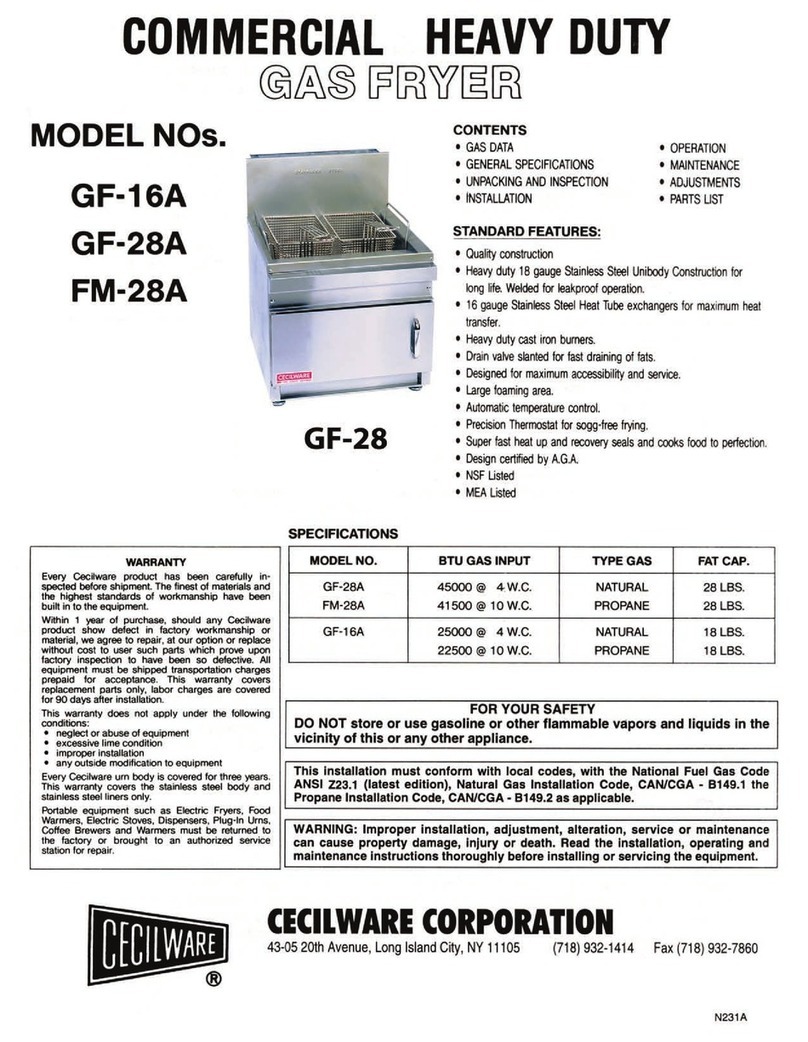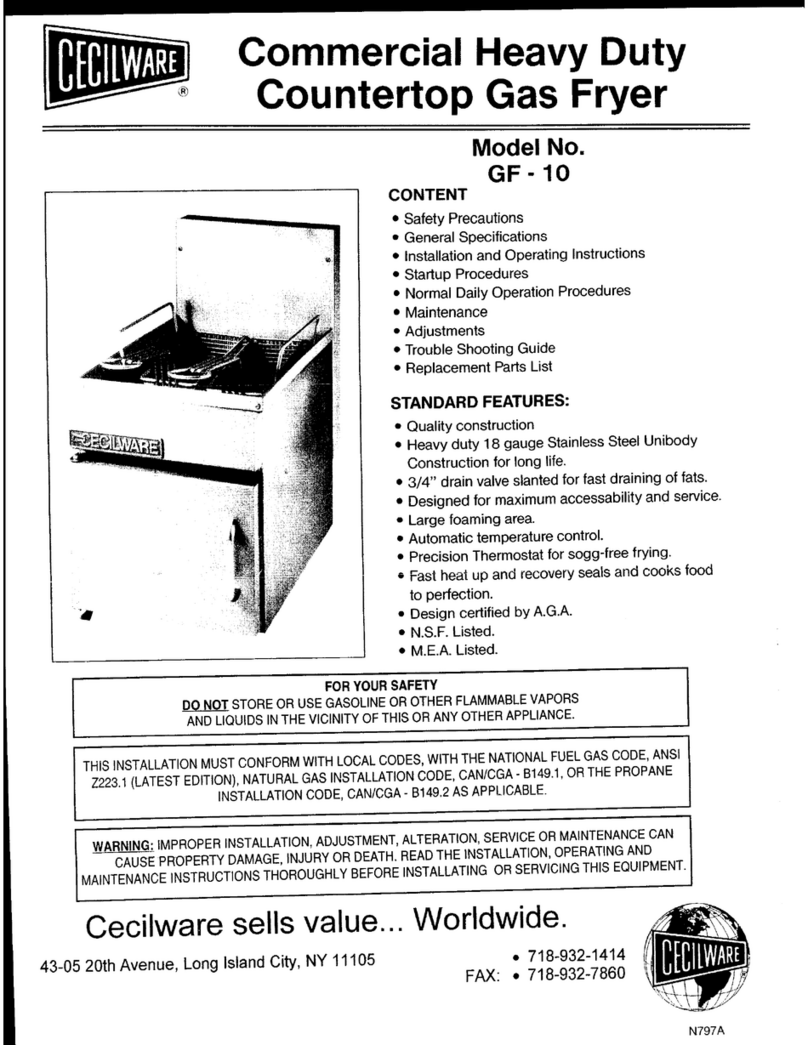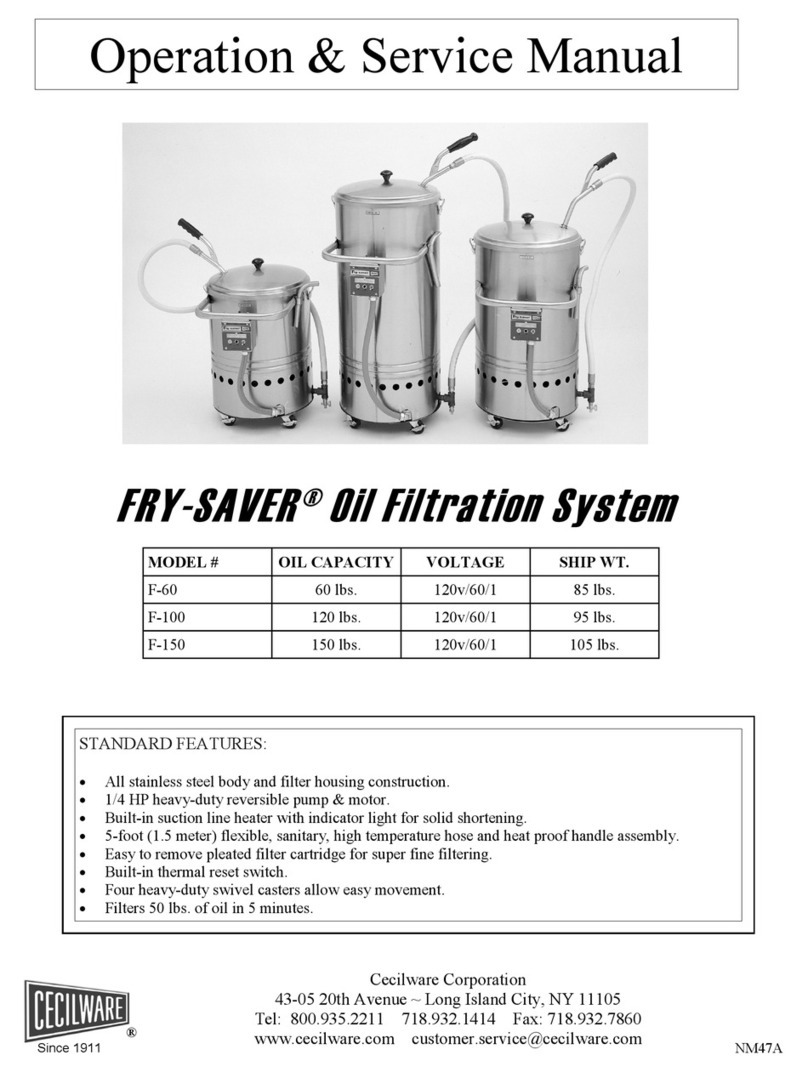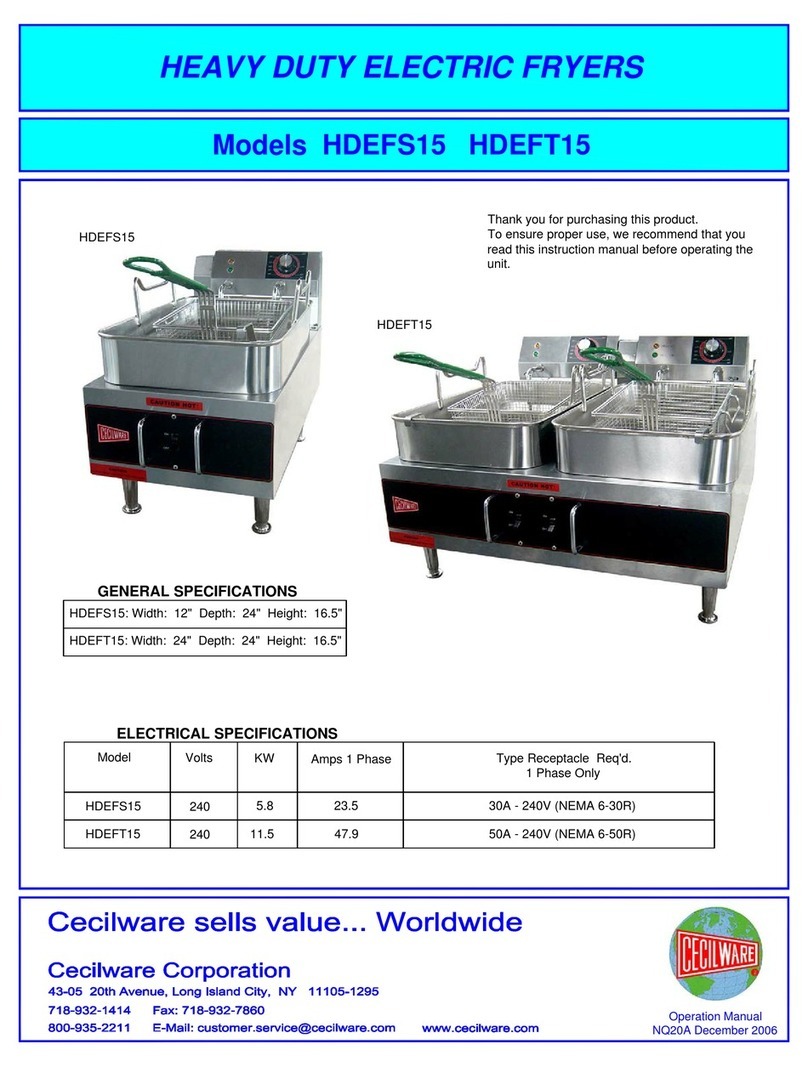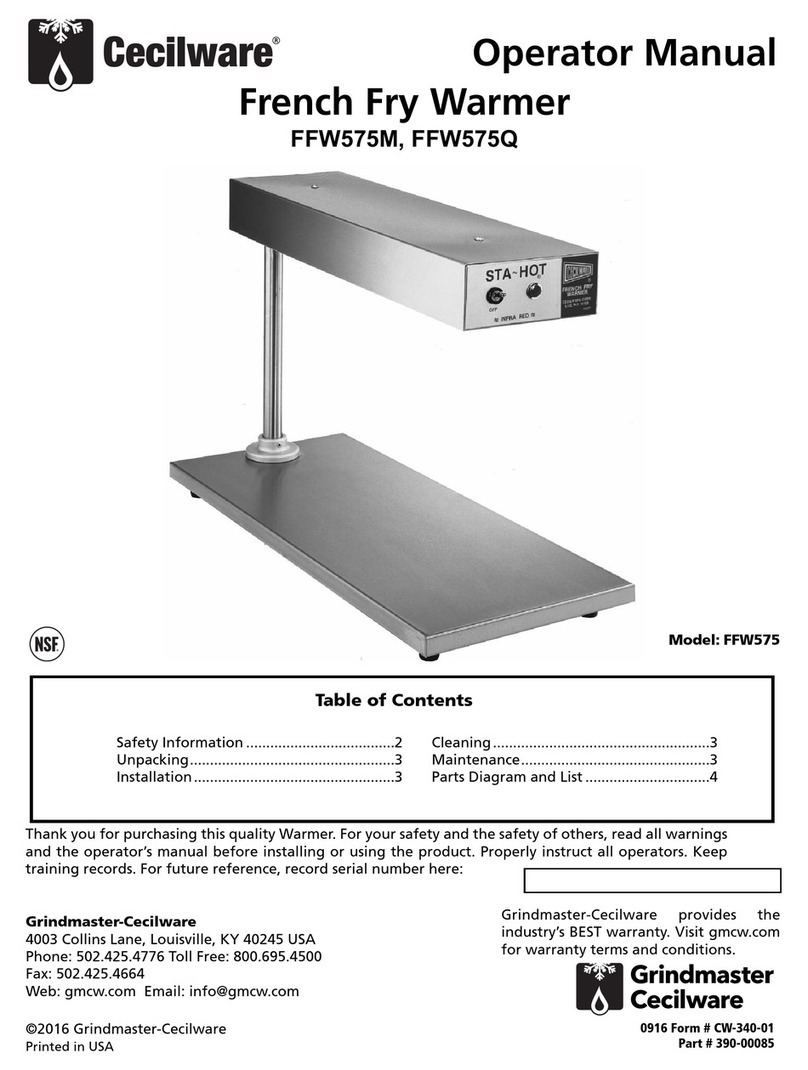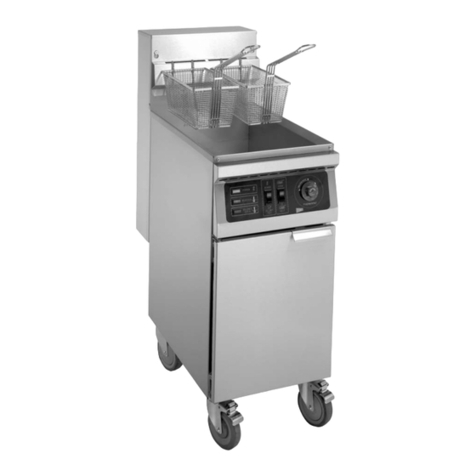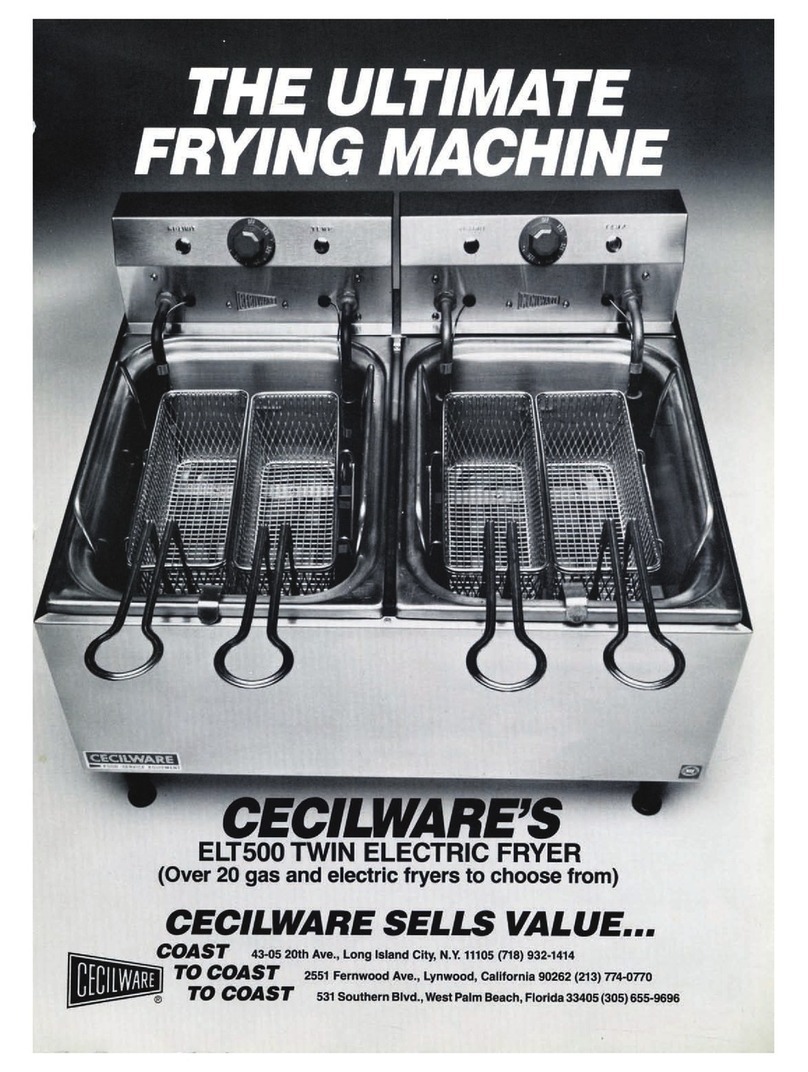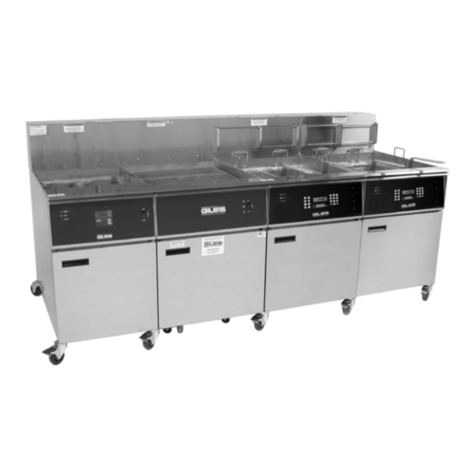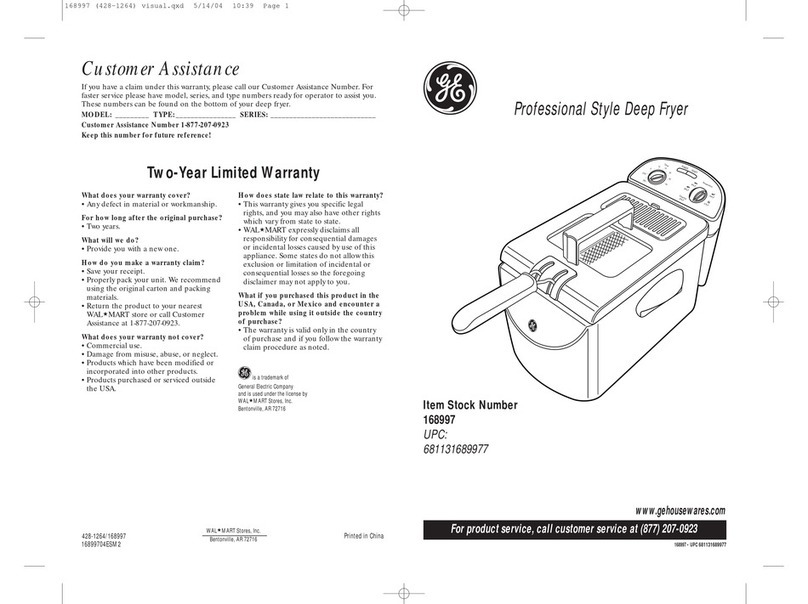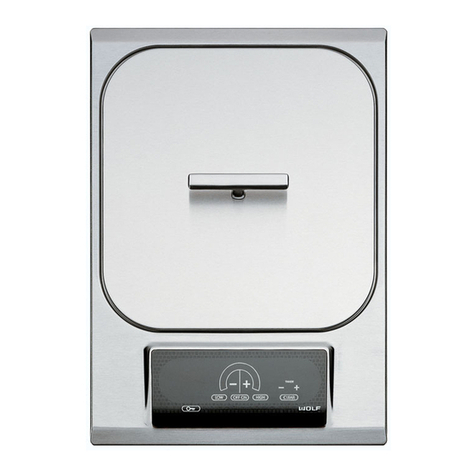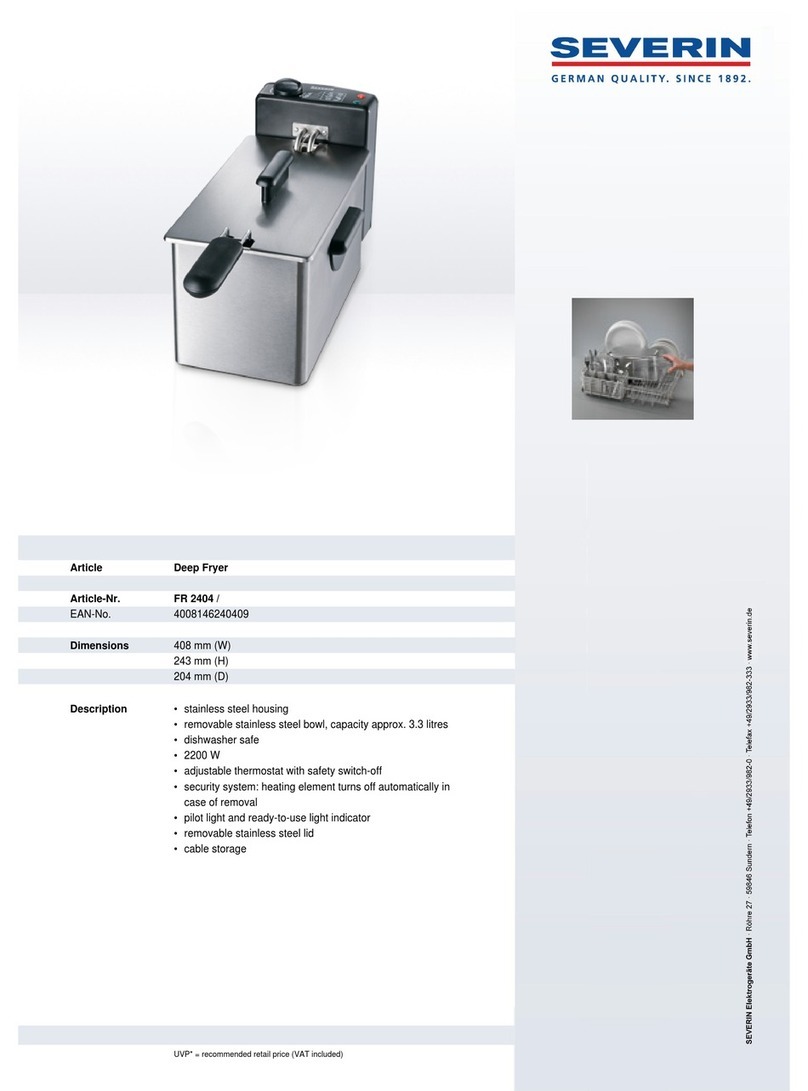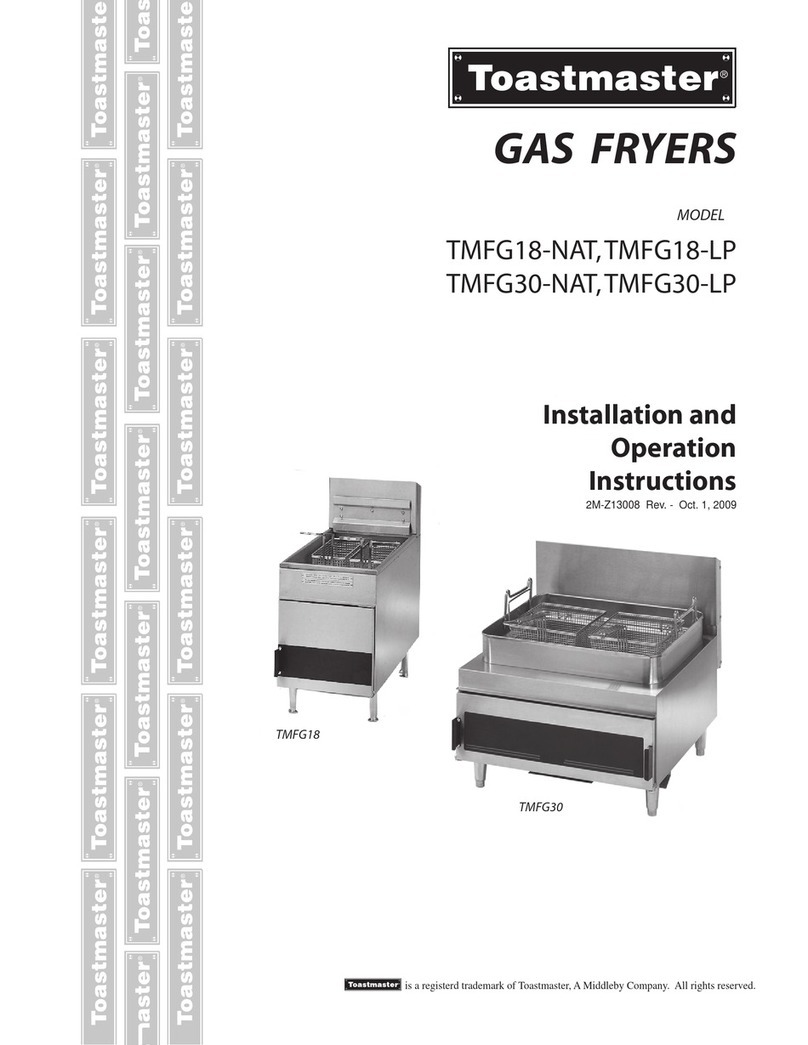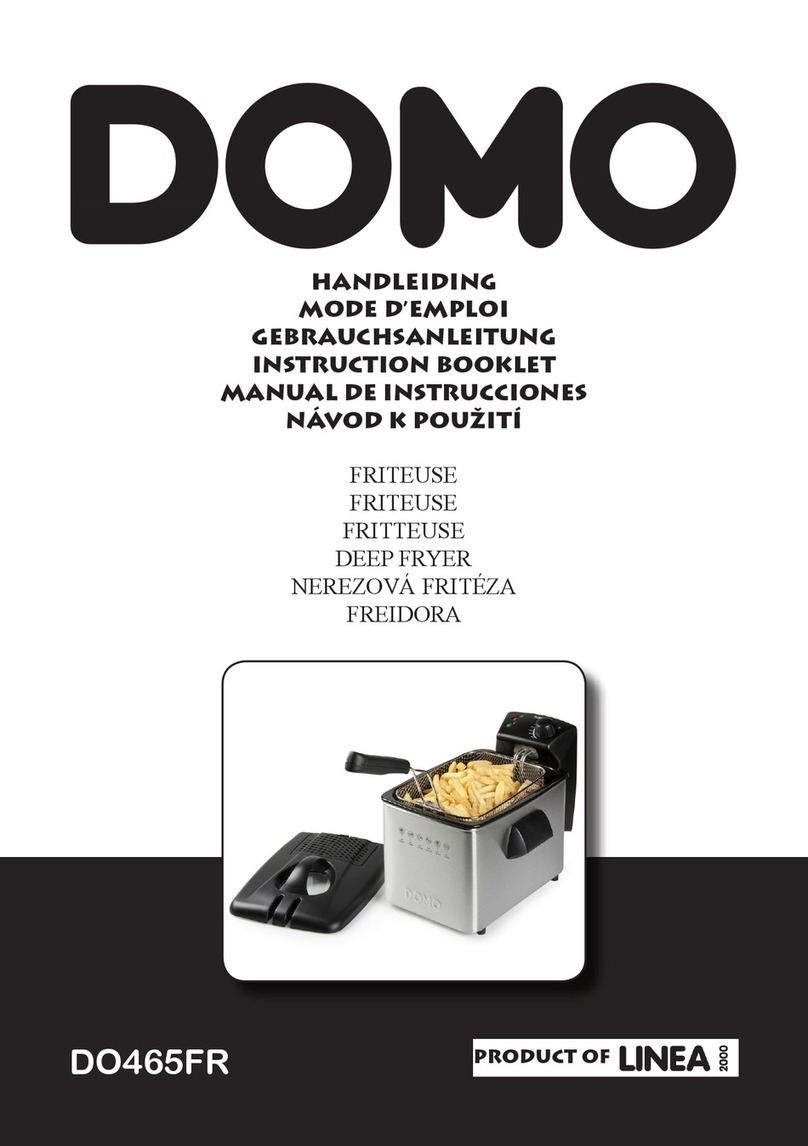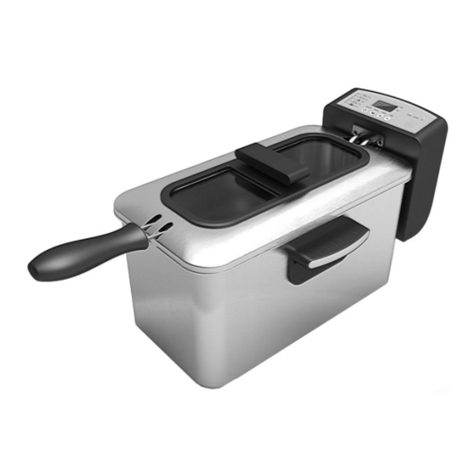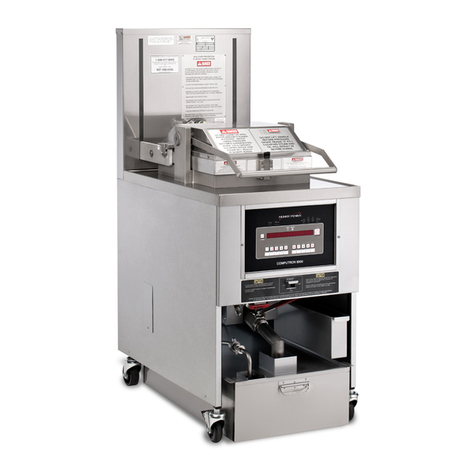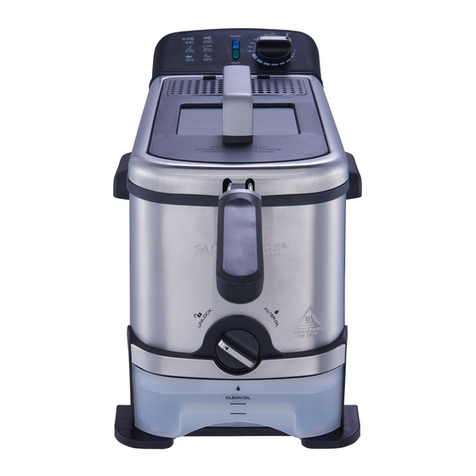
SECTION A – INSTALLATION AND OPERATING INSTRUCTIONS
A1 – Unpacking – With the container upright cut the plastic straps around shipping container and lift off top, exposing
Fryer. Check Fryer for any visible change due to exceptionally rough handling during shipping. Report damage to
the delivering Freight Carrier within 15 days of delivery.
A2 – Accessories shipped in the vessel include: Accessories available as optional:
1 – Basket Hanger 1 – Tank Cover
2 – Baskets 1 – Large Basket
1 – Drain Pipe Extension 4 – Swivel Casters (2w/Locks)
4 – 6 inch Adjustable Legs 1 – Quick Disconnect Connector, 48’’ w/restraint
A3 - Mounting of Legs or Casters – Carefully tip Fryer back and screw legs or (optional) casters into the threaded base
of Fryer. When installing casters make sure the swivel lock casters are mounted towards the front of the fryer. A high
strength Restrainer and Quick Disconnect Gas Connecter must be installed when casters are used. Avoid putting
any strain on rear legs or casters when tipping fryer back to an upright position.
A4 – Pre-Installation Instructions – The installation of your Fryer must be made by a licensed plumber and the installation must conform to State
and Local codes, the National Fuel Gas Code, ANSI Z223.1 • NFPA54, and the Natural Gas and Propane Installation Code, CSA-B149.1, as
applicable.
A5 – Air Supply and Ventilation – Adequate ventilation and air supply must be provided in order for the Fryer to operate
properly and efficiently. The area in front of and above the Fryer must be clear to avoid any obstruction of flow of
combustion and ventilation air. Do not, under any circumstances, connect the Fryer flue directly to a building exhaust
system or place the flue outlet directly into the plenum of the exhaust hood as it will adversely affect the gas
combustion of the Fryer.
The vent system should be of such design as to allow easy access for cleaning and degreasing on a regular basis in
order to prevent fires. An automatic fire extinguishing system should be an integral part of the vent design. Since the
temperature of the flue gases emanating from the Fryer flue can reach 1200° F, temperature sensing devices of the
automatic fire extinguishing system must be sized accordingly to prevent premature turn-on. The minimum vertical
distance from the top of the Fryer flue to vent system filters should be 18 inches or more.
A6 – Clearances – Your Fryer is design certified for use on combustible floors. The minimum clearances for combustible
and non-combustible construction is as follows: 6 inches from SIDE and 6 inches from BACK. Fryer must be
installed with 6 inches high legs or casters (optional). At least 16 inches clearance must be provided between the
frying surface of the Fryer and the surface flames from any adjacent cooking equipment.
A7 – Gas Connection – Before connecting Fryer to gas line, check the rating label on inside of door panel to make sure
that the gas type called for on label coincides with the type of gas available on site. A ½ inch NPT gas pipe
connection is provided at the rear of fryer. An accessible manual shut-off valve must be installed in the gas supply
line ahead of the Fryer for future service. The supply pipe must be sized to accommodate all the gas fired equipment
that may be connected to the gas supply. Check with your local Gas Company as to proper pipe size. Only pipe
sealant resistant to action of L.P. gas should be used on pipe joints. Before attempting to light Fryer, check joints for
tightness using a soap and water solution. Do not use an open flame.
A8 – Flexible Gas Connectors and Restraints (See illustration 1) – For Fryers equipped with casters, installation shall be made with a
Connector that complies with the Standard for – Connectors for Movable Gas Appliances ANSI Z21.69 • CSA6.16 and a Quick-Disconnect
Device compliant with the Standard for Quick-Disconnect Devices for use with Gas Fuel Connector or Quick-Disconnect Device. A high
strength Restrainer and proper size Quick-Disconnect Gas Connector conforming to above ANSI and/or CAN/CGA standards should be
ordered from Cecilware in conjunction with our NSF approved casters. If disconnection of the restraint is necessary for servicing Fryer, the
4
